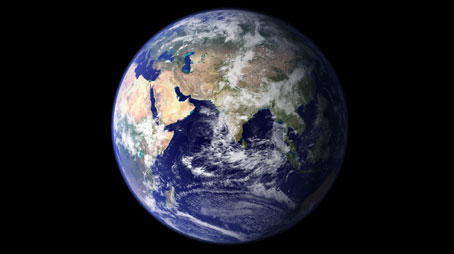

Earth system science
Global change is often seen as a series of separate problems – climate change, biodiversity loss, dwindling water resources – with separate priorities and solutions. But the Earth behaves as a system, where biological and physical processes interact to determine prevalent global environmental conditions. Now human activity is a major driver of change in the Earth system.
Humans have become such a dominant environmental force, notably after the industrial revolution, that a new geological era, the Anthropocene, has been proposed to describe the last few hundred years.
Increased population growth together with accelerated human activities and economic wealth over the past century have greatly increased resource use, as reflected in agriculture, fisheries, forestry, industry, transport, energy and urbanisation. This has resulted in multiple and interacting global environmental impacts as seen by the current values of greenhouse gases temperature.
The Earth System has clearly moved far outside the range experienced over the last 700,000 years and is hence is operating in a “no-analogue” state.